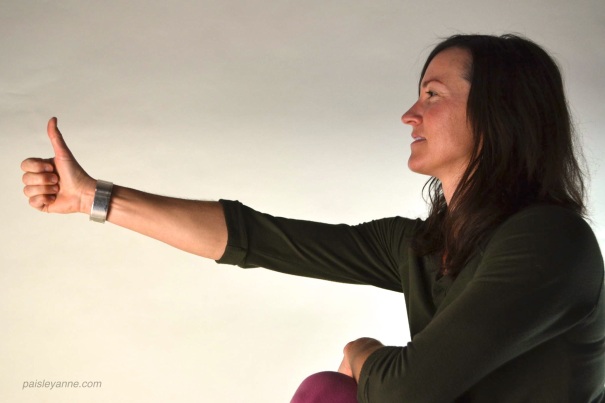Simple Techniques To Relieve Eye Strain (Part 1)
We spend so much time on the computer and indoors, that our eyes often feel strained and tired at the end of the day. Here is some very brief information on how the eyes work and some activities to help you ease eye strain.
How The Eyes Work
Within our eyes are special photoreceptor cells called rods and cones. Light passes through the retina, near the front of the eyeball, and collects on these 137 million tiny cells within the eyeball itself. The information turns into electrical impulses that the brain interprets into an image.
Rods pick up our peripheral vision, and cannot see clearly. They see only shades of black and gray, yet are quite sensitive in the dark.
Sharp detail and clarity, including color, is seen from the cones alone. For the sharpest vision, the object in view needs to be in the center of our field of vision. Notice how things you aren’t focusing on are slightly less bright, or maybe even blurry.
Points of Focus
To improve both our clear, centralized vision/cones, as well as our peripheral vision/rods, we need to keep our eyes moving. When we do focus, it should be on only one object at a time, in the center of our visual field. In the following exercise you’ll move your eyes between three different focal points. First, very close. Second, a middle distance. And, third, far away.
- Extend your arm straight out in front of your face.
- Make the “thumbs up” symbol with your hand.
- Gaze first at the tip of your nose.
- Second, look at your thumbnail.
- Third, focus on something far in the distance, preferably 20 feet away or more.
- Then, reverse that order: distance, thumb, nose
- Repeat 3-5 times.
Movement
“We are creatures designed for continual challenge. We must grow, or we begin to die…So just standing still isn’t really an option. We have to move on. If not, disturbances will come.” — BKS Iyengar, Light On Life
Non-movement creates tension (think of an arm or leg frozen in a cast and how tight and atrophied it gets while immobilized). In the eyes, non-movement is staring. Staring creates rigidity in the muscles around the eyes, as well as in the head, neck and shoulders. Instead of staring, become curious, flexible and adaptable. Let go of the status quo and seek (and see!) change, movement and variety.
- Blink naturally and often.
- Soften your face and consciously avoid straining your eyes, neck and shoulders.
- Stay present and aware of your surroundings, don’t check out with a blurred-vision stare.
- Look at different colors and brightnesses, the light receptors in your eyes are designed for it.
- Let your eyes move around an object to take in all its components.
- Allow your mind to explore how something works, your eyes will follow in an effort to put the pieces together.
Darkness & Light
Darkness allows for the production of the sleep hormone melatonin. If we spend all our time looking at bright, little screens, especially before, or, gasp, IN bed, it not only strains our eyes, but can disrupt our sleep. Similarly, exposure to natural light gives a boost of vitamin D and helps set a healthy body clock.
- Get off your computer, ipad and phone at least 30 minutes before bed and dim the lights.
- Spend 10-15 minutes of time in the sunshine daily, if possible, ideally in the early morning.
- Break the habit of always wearing sunglasses and allow your eyes some time in natural light; you can let the light penetrate your closed eyelids for a few minutes, instead.





Pingback: Simple Techniques To Relieve Eye Strain (Part 2) | Paisley Anne : for yoga, mindfulness & well-being